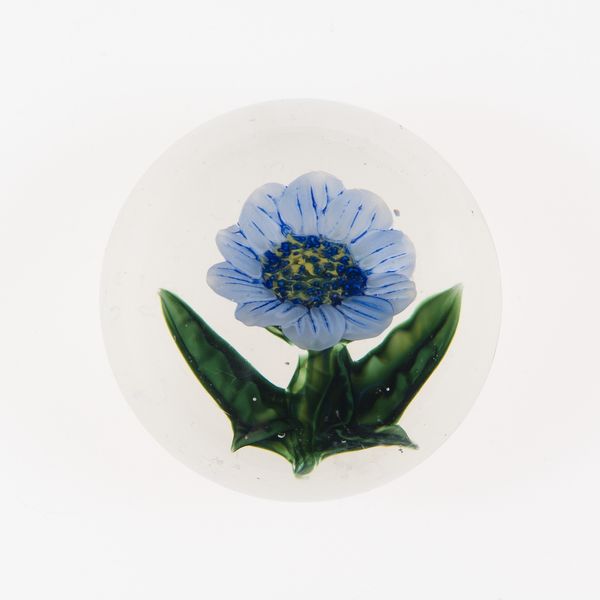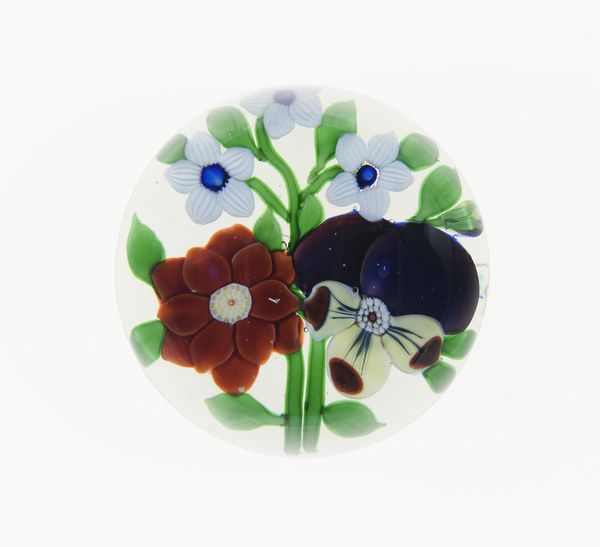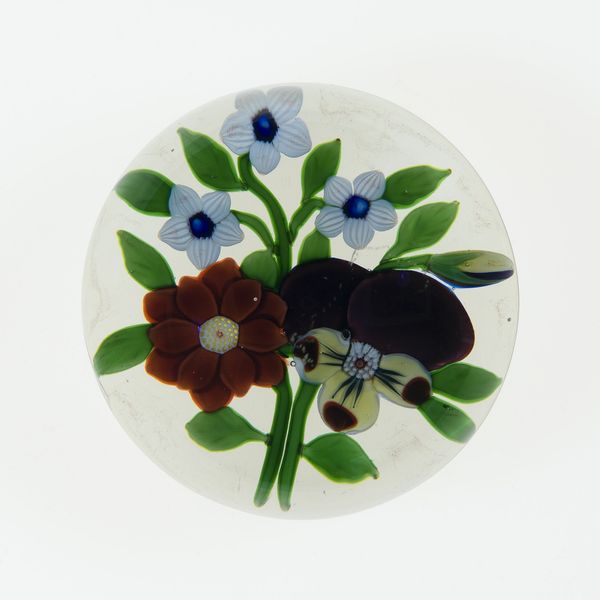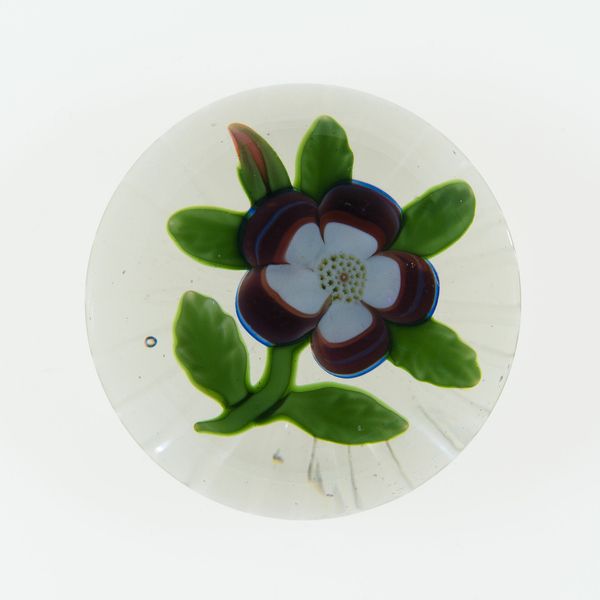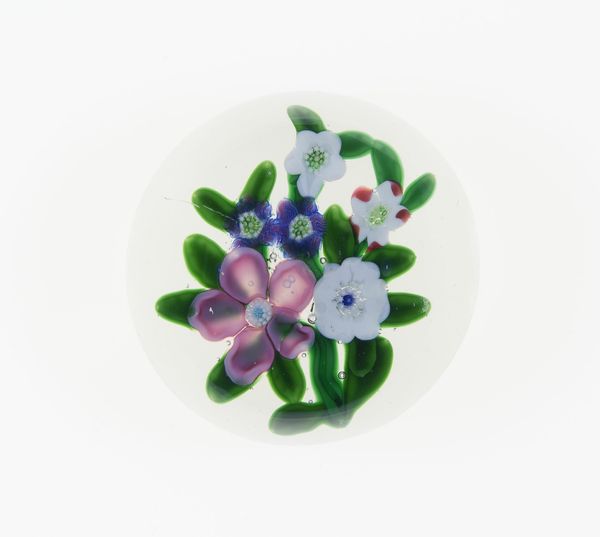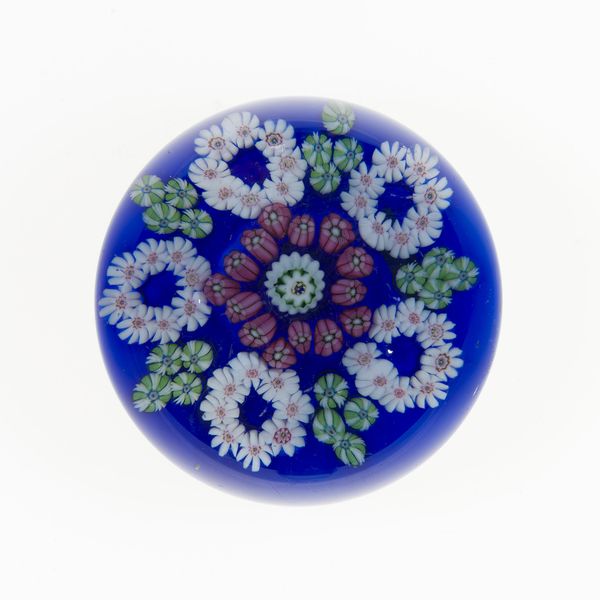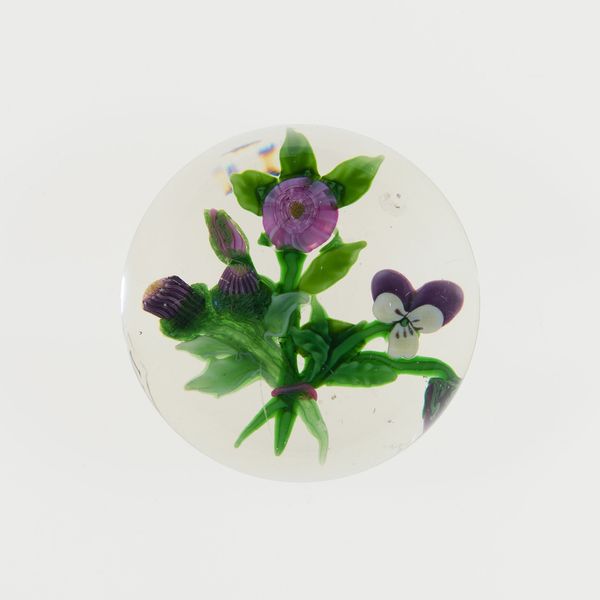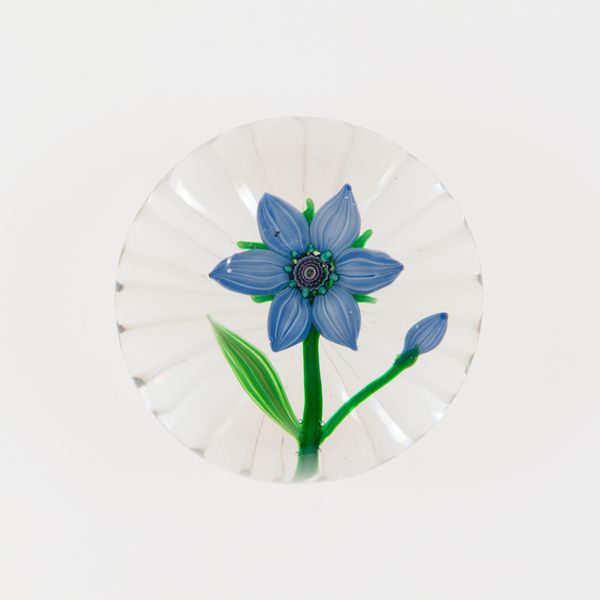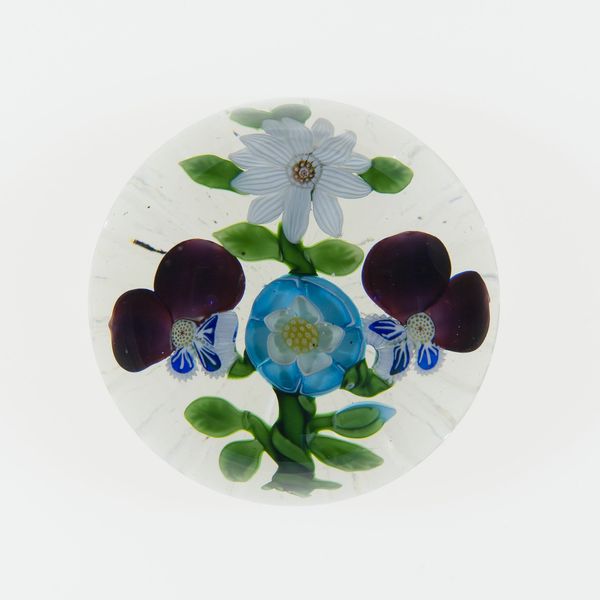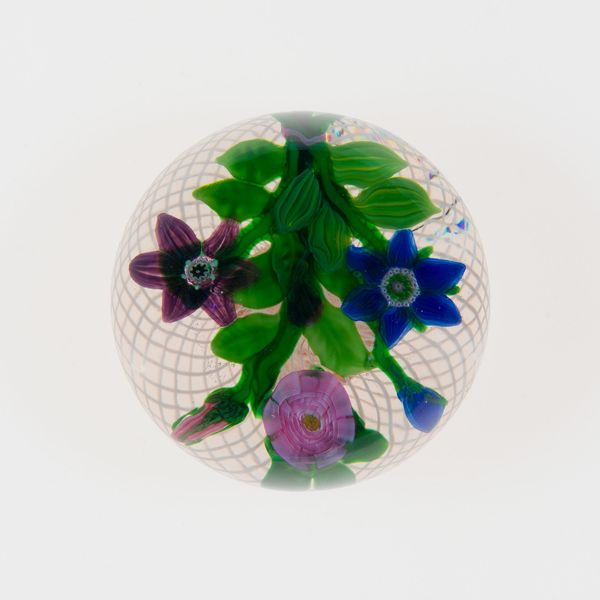
paper, glass
#
paper
#
glass
Dimensions: Diam. 7 cm (2 3/4 in.)
Copyright: Public Domain
Curator: Here at the Art Institute of Chicago, we have a charming little piece: a glass paperweight crafted by the Clichy Glasshouse around 1845 to 1860. Editor: It's incredibly delicate looking. The pale purple flower is almost floating against that wispy, white background. A very contained sort of beauty, wouldn't you say? Curator: These paperweights were extremely popular in mid-19th century Europe, becoming associated with bourgeois domesticity. They offered a glimpse of nature, literally contained and controlled. One has to wonder about the relationship between this desire for containment and anxieties surrounding industrialization. Editor: The craftsmanship is what immediately grabs me. Note how the clear glass sphere subtly magnifies the details of the flower and the background, enhancing the tactile sensation. It gives a three-dimensional quality to something that is inherently still. Curator: Absolutely. And Clichy, along with Baccarat and Saint-Louis, really raised the bar for these objects. They moved from simple utilitarian tools into collectible artworks. This object speaks to how industrial processes were influencing and transforming domestic space, reflecting a burgeoning culture of collecting. Editor: But even separate from its social context, consider the artist's command of light and color. That restrained palette works beautifully. It's soothing. There's a remarkable harmony in how the lavender petals complement the airy white ground, giving the piece an almost ethereal presence. Curator: Well, I agree it's aesthetically pleasing. Yet, it's crucial to remember that these weren’t intended merely as aesthetic objects. They became signifiers of middle-class identity and taste during a period of great social transformation. The seemingly simple form held significant symbolic value. Editor: Precisely. And that contrast - function and decor, utility and pure beauty - generates such intrigue. It's a deceptively simple piece. It appears quaint, but the composition and artistic vision is undeniable. Curator: Yes, indeed. It makes you consider how historical artifacts aren't simply documents; they are expressions of social life embedded within cultural economies of value. Editor: Exactly, a pocket universe of mid-19th century artistic and cultural history.
Comments
No comments
Be the first to comment and join the conversation on the ultimate creative platform.


